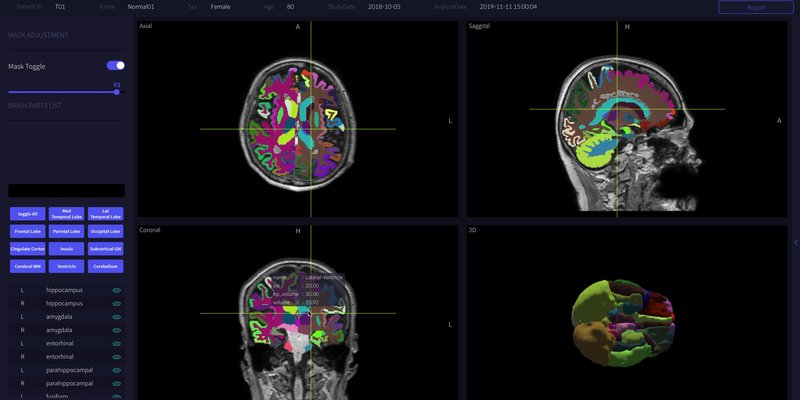
Company: VUNO Product: VUNO Med®-DeepBrain™
Automated idiopathic normal-pressure hydrocephalus diagnosis via artificial intelligence-based 3D T1 MRI volumetric analysis
American Journal of Neuroradiology, 2024
Abstract
Background and purpose
Idiopathic normal pressure hydrocephalus (iNPH) is reversible dementia, that is underdiagnosed. The purpose of this study was to develop an automated diagnostic method for iNPH using artificial intelligence techniques with a T1-weighted MRI scan.
Materials and methods
We quantified iNPH, Parkinson's disease, Alzheimer's disease, and healthy control patients on T1-weighted 3D brain MRI scans using 452 scans for training and 110 scans for testing. Automatic component measurement algorithms were developed for Evans' index, Sylvian fissure enlargement, high-convexity tightness, callosal angle, and normalized lateral ventricle volume. XGBoost models were trained for both automated measurements and manual labels for iNPH prediction.
Results
A total of 452 patients (200 men; mean age ± standard deviation, 73.2 ± 6.5 years) were included in the training set. Of the 452 patients, 111 (24.6%) had iNPH. We obtained AUC values of 0.956 for automatically measured high-convexity tightness and 0.830 for Sylvian fissure enlargement. Intra-class correlation values of 0.824 for the callosal angle and 0.924 for Evans' index were measured. Using the decision tree of the XGBoost model, the model trained on manual labels obtained an average cross-validation AUC of 0.988 on the training set and 0.938 on the unseen test set, while the fully automated model obtained a cross-validation AUC of 0.983 and an unseen test AUC of 0.936.
Conclusion
We demonstrated a machine-learning algorithm capable of diagnosing iNPH from a 3D T1-weighted MRI scan that is robust to the failure. We propose a method to scan large numbers of 3D T1-weighted MRI scans with minimal human intervention, making possible large-scale iNPH screening.
Read full study